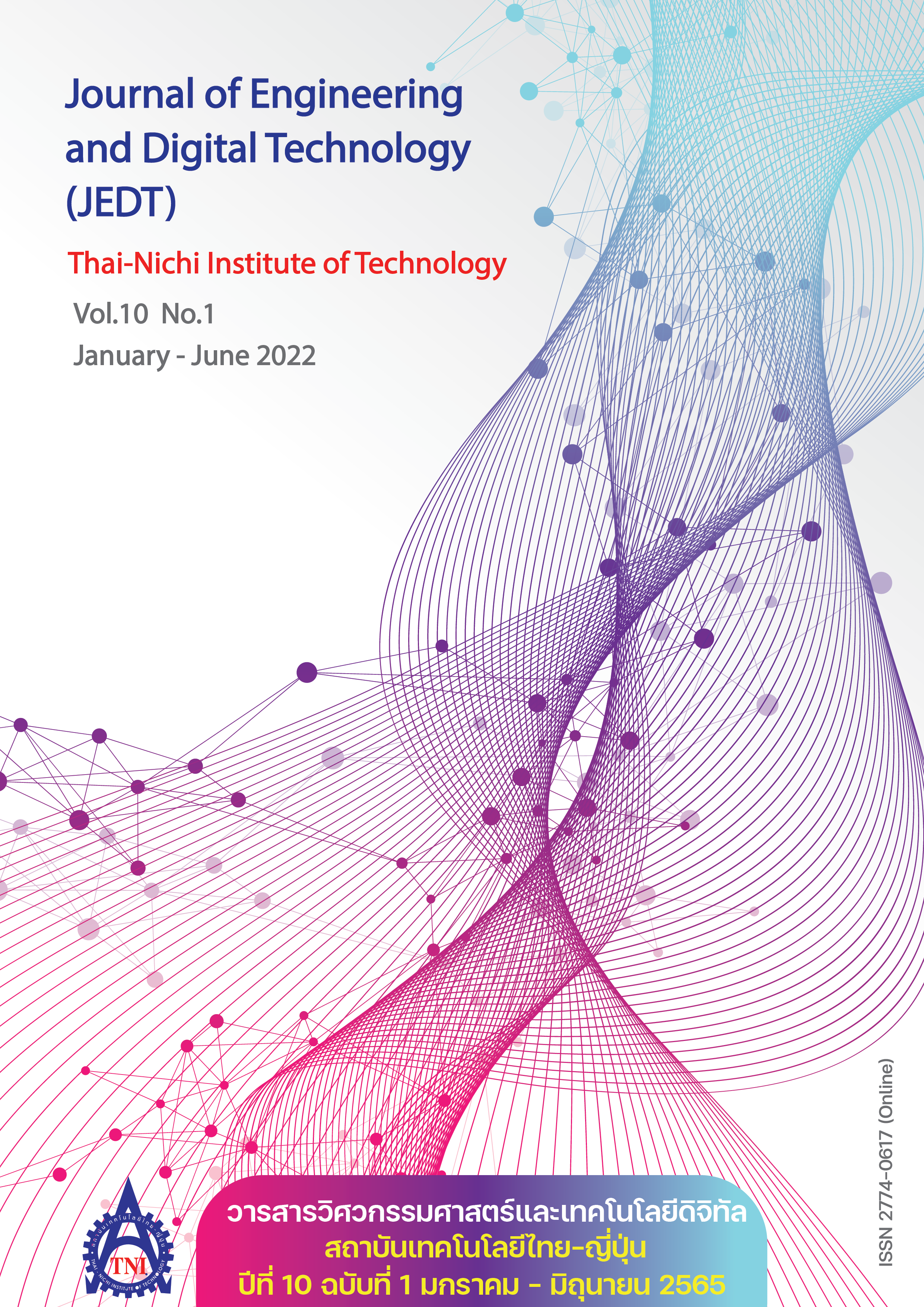The Study of the Effect of Channel Obstacles on Stream Flooding
Main Article Content
Abstract
The purpose of this research is to study the effect of obstacles across channels to determine if they increase flooding of the stream. The HEC-RAS model was used to simulate water flow and levels with and without obstructions across streams. The level of water and the height of the stream bank were analyzed to determine the distance of flooding along the stream in both cases. The results showed that the effect on the water level in front of the obstacles such as a weir or a culvert is different. The water level in front of the culvert is lower than the water level in front of the weir at low flow. However, when the stream flow exceeds the flow capacity of the culvert, the water level in front of the culvert will be higher due limited by the cross-section of the culvert receiving the water flow. The flood distances and water levels along the stream under high flow show that the flood distances decrease to 580.6 meters from 953.4 meters along the channel when no obstacles restrict the flow. The existence of obstructions in the channel causes the water level to rise higher than usual thus causing the flood distances to increase along the upstream side of the obstruction while flooding does not occur downstream of the obstruction. This research shows that culverts are prone to causing greater flooding than weirs during heavy rainfall events.
Article Details

This work is licensed under a Creative Commons Attribution-NonCommercial-NoDerivatives 4.0 International License.
Article Accepting Policy
The editorial board of Thai-Nichi Institute of Technology is pleased to receive articles from lecturers and experts in the fields of engineering and technology written in Thai or English. The academic work submitted for publication must not be published in any other publication before and must not be under consideration of other journal submissions. Therefore, those interested in participating in the dissemination of work and knowledge can submit their article to the editorial board for further submission to the screening committee to consider publishing in the journal. The articles that can be published include solely research articles. Interested persons can prepare their articles by reviewing recommendations for article authors.
Copyright infringement is solely the responsibility of the author(s) of the article. Articles that have been published must be screened and reviewed for quality from qualified experts approved by the editorial board.
The text that appears within each article published in this research journal is a personal opinion of each author, nothing related to Thai-Nichi Institute of Technology, and other faculty members in the institution in any way. Responsibilities and accuracy for the content of each article are owned by each author. If there is any mistake, each author will be responsible for his/her own article(s).
The editorial board reserves the right not to bring any content, views or comments of articles in the Journal of Thai-Nichi Institute of Technology to publish before receiving permission from the authorized author(s) in writing. The published work is the copyright of the Journal of Thai-Nichi Institute of Technology.
References
Faculty of Engineering, “Integration of water resources management project: The development activities of information system for prepare to flood disaster and landslides in Chiang Rai Province,” Chiang Mai Univ., Chiang Mai, Thailand, Final Rep., Mar. 2020.
Post Today. “Forest water floods villages in the area at Mae Chan District and Mae Sai District over 500 houses.” (in Thai), POSTTODAY.com. https://www.posttoday.com/social/local/456586 (accessed Oct. 15, 2021).
Thairath. “Heavy rain, forest water from Doi Tung floods 7 villages in Chiang Rai.” (in Thai), THAIRATHONLINE.co.th. https://www.thairath.co.th/news/local/north/1353969 (accessed Sep. 10, 2021).
HEC-RAS, River Analysis System Hydraulic Reference Manual, USACE, Davis, CA, USA, 2018.
S. Chuenchuoklin, “River analysis simulation model of main river and diversion channel planning for flood delineation: Case study for Pasak River, Phetchabun Province,” (in Thai), Naresuan Univ. Eng. J., vol. 1, no. 1, pp. 9–18, 2006.
P. Numkhang, “Analysis of Flow in Mae Klong River by HEC-RAS Model,” (in Thai), B.E. thesis, Dept. Irrigation Eng., Kasetsart Univ., Nakhon Pathom, Thailand, 2007.
HEC-RAS River Analysis System User's Manual Version 5.0, USACE, Davis, CA, USA, 2016.
HEC-RAS, River Analysis System Application Guide, USACE, Davis, CA, USA, 2018.
HEC-RAS River Analysis System, Hydraulics Reference Manual Version 4, USACE, Davis, CA, USA, 2010.
J. E. Nash and J. V. Sutcliffe, “River flow forecasting through conceptual models part I — A discussion of principles,” J. Hydrol., vol. 10, no. 3, pp. 282–290, Apr. 1970, doi: 10.1016/0022-1694(70)90255-6.
D. N. Moriasi, J. G. Arnold, M. W. van Liew, R. L. Bingner, R. D. Harmel, and T. L. Veith, “Model evaluation guidelines for systematic quantification of accuracy in watershed simulations,” Trans. ASABE., vol. 50, no. 3, pp. 885–900, 2007, doi: 10.13031/2013.23153.


